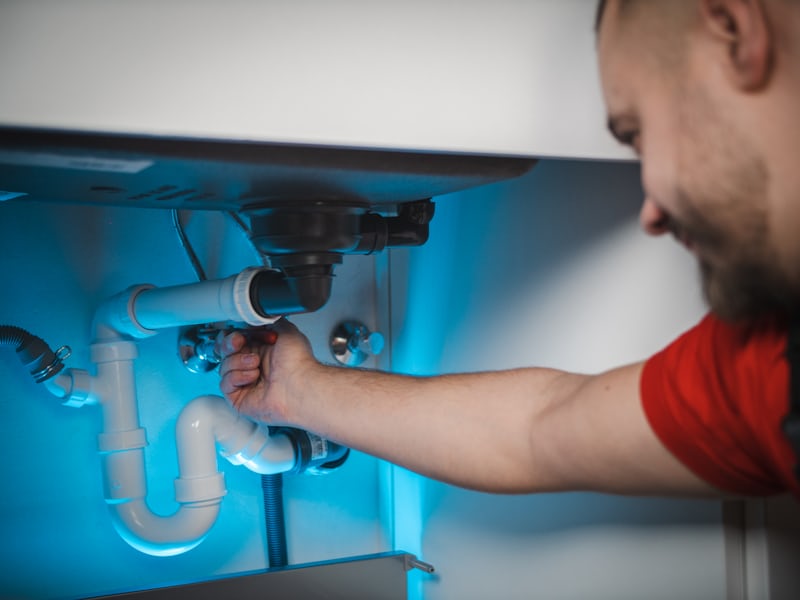For property managers in Saint-Lambert, maintaining efficient plumbing systems is crucial. Drain issues in multi-unit buildings are common, and proactive solutions can prevent small clogs from becoming major emergencies. One such effective method is drain snaking—a mechanical technique used to clear blockages deep within pipes.
This comprehensive guide explores why condo and townhouse plumbing often requires this service, explains the process, outlines best practices for property managers, and helps you understand when to call in trusted local plumbers in Montreal. Whether you manage a newly built complex or a century-old building, drain snaking can be a game-changer for your maintenance strategy.
Why Drain Issues Are Common in Multi-Unit Properties
Shared Systems Create Shared Risks
In condos and townhouses, drain lines often serve multiple units. A blockage in one unit’s kitchen can back up into another, causing widespread disruption.
Aging Infrastructure
Many Saint-Lambert buildings were constructed decades ago using cast iron or clay pipes. These materials degrade over time and are more prone to corrosion and clogging.
Heavy Usage
Higher occupant density means more water flow and a greater risk of grease, hair, and debris clogging drains.
Seasonal Changes
Winter breaks can lead to ice forming in drains, and spring thaws may loosen sediment. Without regular maintenance, these seasonal effects exacerbate problems.
Drain snaking is a cost-effective preventative measure that can avoid emergency repairs and tenant complaints.
What Is Drain Snaking and How Does It Work?
Drain snaking uses a flexible cable—also called a plumber’s snake or auger—fed into the affected drain. Attached to a power drill or manual crank, the cable breaks through obstructions using a cutting or corkscrew head at its tip.
Typical Steps:
- Initial inspection, often with a camera, to locate the clog.
- Insertion of the snake until resistance is felt.
- Rotation and forward movement to break or pull out the block.
- Removal of debris and flushing with water to clear the pipe.
- Post-snaking inspection to confirm the clog is cleared.
Industrial-grade snakes reach 15–30 m, deep enough to clear blockages in the basement and main condo lines.
Why Drain Snaking Is the Preferred Method
Efficient and Non-Destructive
Unlike chemical cleaners that can damage pipes, drain snakes mechanically clear the path without harming plumbing.
Cost-Effective
Snaking is relatively inexpensive—typically $150–$400, depending on depth and difficulty—and prevents costly replacements.
Environmentally Friendly
No harsh chemicals are involved. Debris is physically removed and disposed of properly.
Long-Term Solution
Unlike temporary chemical patches, snaking removes the obstruction entirely, reducing recurrence.
When Snaking Becomes Essential for Property Managers
Repaired Drain Symptoms
Repeated slow draining in sinks or tubs is often the earliest sign of a developing clog.
Multiple Units Affected
If more than one unit reports slow drainage, blockages may be in shared vertical stacks or main sewer lines.
Pre-Inspection for Lease Turnover
Snaking during turnover inspections can prevent tenant clogging issues before they start.
After Repairs or Renovations
Construction debris often causes blockages when left unsecured. Snaking post-renovation ensures no remnants are left behind.
Maintenance Contracts
Building-wide routine snaking ensures peace of mind and helps avoid emergency call-outs.
Implementing a Drain Snaking Program in Saint-Lambert
Step 1: System Assessment
Begin with a building-wide inspection. Use mini cameras to inspect vertical stacks and main lines. Document pipe types, age, flow issues, and trouble areas.
Step 2: Scheduling Schedule
For older systems, aim for annual or semi-annual scanning. New buildings may need less frequent service, but still require checks.
Step 3: Unit-by-Unit vs. Main-Line
Decide whether to snake individual units each turnover or perform centralized cleaning of main lines. A hybrid approach works well for many properties.
Step 4: Tenant Communication
Inform residents about the upcoming service, to expect brief disruptions. Advise them to avoid using faucets during snaking.
Step 5: Inspection and Documentation
Before snaking, inspect with a camera; after, record that blockages were cleared. Keep a log of services for maintenance records and warranty compliance.
Choosing the Right Service Provider
When selecting contractors, find those who specialize in multi-unit buildings and provide:
- High-quality inspection cameras
- Industrial-grade drain snakes and augers
- Insurance and licensing for Montreal and Saint-Lambert
- Warranties and clean-up commitments
Experienced drain snaking technicians in Montreal understand local building codes and typical pipe configurations.
DIY vs. Professional Drain Snaking
DIY Limitations
Home-grade snakes are short (1–7 m) and struggle with deep or widespread clogs. Misuse can harm pipes or fail to address the root cause.
Professional Benefits
Professionals handle deep-seated clogs and provide full inspections. They ensure long-term resolution and preventive maintenance.
Emergency Scenarios and Preparedness
Emergency clogs—blocked main lines, sewage backflow, or burst pipes—require rapid response. Keep a list of certified service providers for plumbing in Saint Lambert emergency callbacks.
An emergency plan should include:
- Clear communication protocols
- Access arrangements for teams
- Backup plumbing fixtures
- Follow-up inspections after emergency service
Cost vs. Value Analysis
| Service Type | Typical Cost* | Value Delivered |
| Main-line snaking | $350–$650 | Prevents building-wide backups and damages |
| Camera inspection | $150–$300 | Identifies issues before they escalate |
| Unit-by-unit snaking | $100–$250/unit | Ensures smooth turnover with minimal downtime |
| Emergency clog resolution | $500–$1,200 | Deals with urgent issues like backups or slow drains |
*Costs may vary based on building size, depth of pipes, and accessibility.
Avoiding Recurrence After Snaking
Regular Inspections
Schedule camera inspections every 1–2 years, even if snaking isn’t needed.
Tenant Education
Promote best practices—straining food bits, using enzyme-based cleaners, and proper use of garbage disposals.
Grease Disposal Programs
Provide barrels or bins for tenant grease disposal to prevent sewer backups.
Monitoring Water Quality
Mineral buildup or corrosion can weaken pipes, increasing blockage risk.
Common Questions from Property Managers
Can we snake without camera inspection?
Not recommended. Cameras help diagnose root causes, ensuring effective and safe snaking.
How deep can you snake?
Professionals can reach 30+ meters with industrial snakes, ideal for basement-to-roof lines.
Will snaking harm my pipes?
No—when handled properly. Technicians use the right cable size and speed settings to avoid damage.
Legal and Compliance Considerations
Saint-Lambert bylaws require the proper disposal of sewer waste. Drain work may require permits depending on building age or sewer type (e.g., septic vs. municipal).
Property managers must keep maintenance logs for insurance and compliance, especially in emergencies.
Long-Term Maintenance Strategy
- Annual inspections with camera technology
- Scheduled drain snaking every 12–18 months for older systems
- Emergency access plans to minimize tenant disruption
- Educational programs to reduce clog frequency
- Partnerships with qualified contractors for fast response and reliable service
Final Takeaway for Property Managers
Drain snaking is a reliable, effective solution for preventing and resolving blockages in condos and townhouses. With careful planning, clear communication, and regular maintenance, property managers can avoid costly service disruptions and inconvenience to tenants.
By hiring skilled local experts and integrating snaking into your maintenance routine, you build safer, better-managed properties. Partnering with skilled local plumbers in Montreal ensures you’re using experienced professionals familiar with regional challenges.



